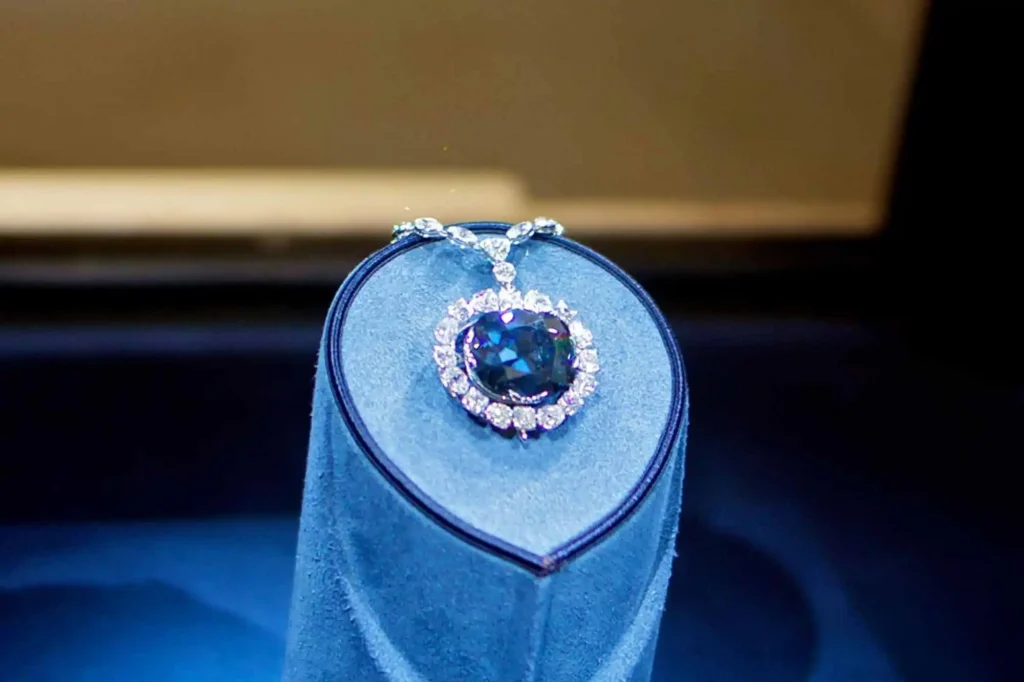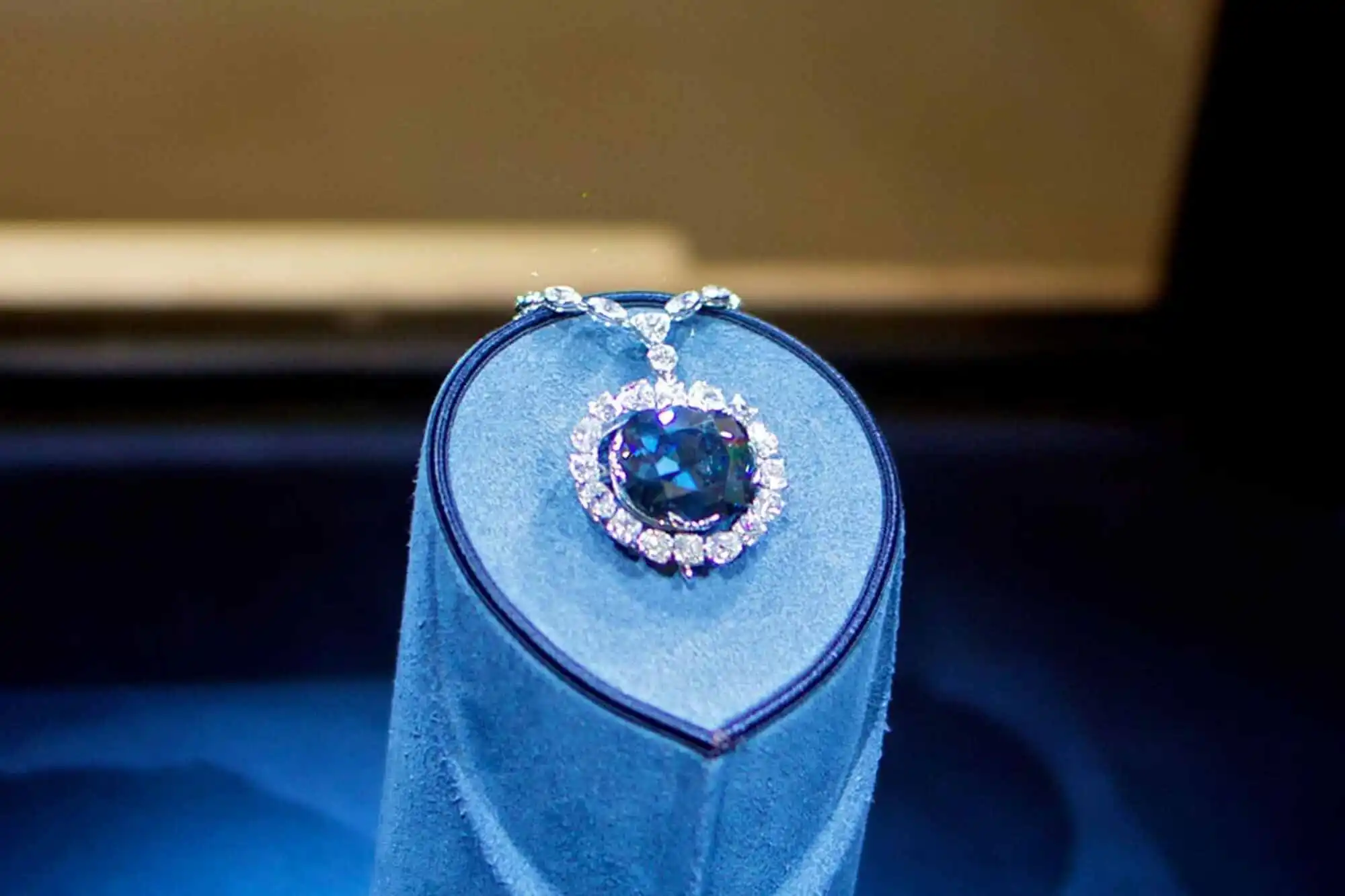The prized 112 carat Hope Diamond is renowned for its incredible hardness, allowing only light to penetrate through, and commands an astounding price. First discovered in the 16th century in India, the diamond was initially showcased as the third eye of a statue of Shiva, the goddess of war. It’s believed to have been cursed by the goddess, leading to a trail of death and misfortune for those who came into possession of it.
Where is the Hope Diamond?
The Hope Diamond is displayed at the National Museum of Natural History in the USA.
What Are the Features of the Hope Diamond?

Recall Louis XIV being dubbed as the Sun King; anyone who has visited Versailles knows the reason behind this. He envisioned his reign as an Enlightenment, shining with the light of the divine realm, and full of knowledge, beauty, and art. The design of the chandeliers in Versailles is meticulously cut to reflect and split light elegantly. The dazzling use of light is omnipresent, through mirrors, windows, and in the architecture and decor.
This same principle applied to diamonds as well. Louis XIV amassed the largest collection of royal jewels on the continent. Influenced by Renaissance ideas of manipulating light through optics and geometry, European jewel cutters learned to cut diamonds in predictable patterns, altering the stone’s reflective and refractive properties to make the light radiate spectacularly from the diamond. They used diamond dust and a “secret ingredient” – olive oil on their wheels – for cutting diamonds.
From a roughly cut gem of 112 carats, Louis XIV transformed Tavernier’s blue diamond into a symmetrical, dazzling jewel of 67 carats, dubbed the French Blue, valued at roughly $3.6 million in today’s currency. He adorned it either on a necklace ribbon or as a brooch.
The diamond was then presented to Kings Louis XV and Louis XVI as part of the French Royal Jewels. Both monarchs wore the diamond as part of the attire for the Order of the Golden Fleece.
History of the Hope Diamond
There are apocryphal stories about Queen Marie Antoinette wearing this blue diamond, though there’s no definitive proof. When she and her husband were imprisoned during the outbreak of the French Revolution, the royal jewels were stored away, displayed to the public, and then stolen in September 1792. Napoleon, who later became Emperor of France, vowed to retrieve all French royal jewels, including the blue diamond, but failed. The French Blue was never found.
What is the Curse of the Hope Diamond?
The purchase of the diamond took place during the Cold War, heightening public anxieties. Many wrote to the Smithsonian and even President Eisenhower, while cartoonists parodied the notion that the United States and Uncle Sam were doomed to death because of it.
While the curse story was being concocted, it also highlighted the enchanting history of the diamond. In the days of French gem merchant Jean Baptiste Tavernier, the blue diamond was initially a roughly cut gem of about 112 carats, acquired in the mid-16th century from the Golconda region of India, the world’s sole known source of diamonds at the time; Brazil and South Africa hadn’t been discovered yet. Numerous stories about how diamonds were mined were told, going back to ancient times and recounted by the likes of Marco Polo. However, Tavernier was the one who saw the diamond mines firsthand and returned with the most comprehensive descriptions.
Native Americans had detailed beliefs about stones for their protective powers and didn’t cut them as we do. Instead, they tried to preserve the stone in its best form by cutting around flaws and imperfections, believing this maximized their ability to protect against negative influences. The idea was that the jewels would absorb negative effects and trap them like in a Pandora’s box. Monarchs wore many diamonds and precious stones – the bigger, the better – for the greatest protection. Other Native Americans carried smaller amulets made of different and smaller stones for the same purpose.
Portuguese, French, Dutch, German, and English traders and merchants flocked to India to buy diamonds, but none bought more jewels or made better deals than Tavernier. Between 1630 and 1670, he made six trips to India. In 1668, after one of his trips, he returned to France and sold the 112 carat blue diamond and about 200 other diamonds to King Louis XIV of France for the newly built Palace of Versailles. A diamond as momentous and rare as the blue diamond of Hope was incredibly unusual, prompting the king’s painter to document its acquisition with a diagram of the gem.
